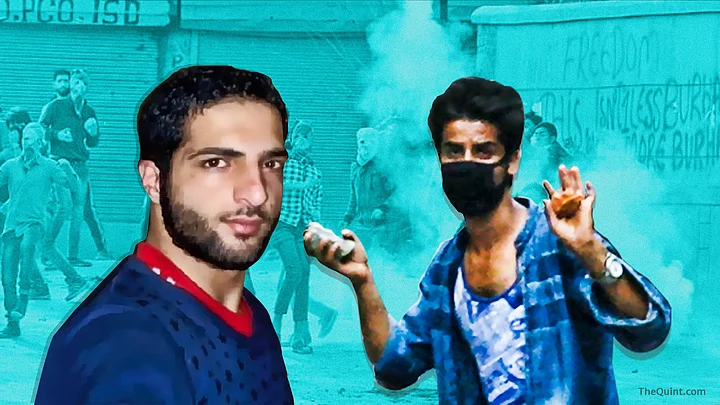Much blood has flowed in Kashmir since militant commander Burhan Wani was killed a year ago. Nor is it over yet – not by a long shot. In fact, the anniversary of his death on 8 July is likely to be used to trigger fresh trouble. Another quantum leap in violence is on the cards.
A shutdown has been called on Burhan’s death anniversary and again on 13 July, the date in 1931 when Kashmiri Muslims rose in mass revolt against the Dogra maharaja.
Significantly, the first to call the extended shutdown was not a Hurriyat faction, or a traders’ or fruit growers’ association, but Hizb-ul Mujahideen chief Syed Salahuddin –from Pakistan.
Ground Was Set
Even last year, preparations were already in place to set Kashmir aflame with protests after Eid – which fell on 6 July last year, just two days before Burhan was killed. If it had not been the killing of Burhan, the organisers would have sought another trigger.
However, they could not possibly have hoped for a more explosive trigger. I had already predicted in September 2015 that killing Burhan would be a huge mistake, that a new battalion of militants would emerge from his funeral, and that insurgency would take a quantum leap.
I had recommended then – almost ten months before he was killed – that the security forces should catch Burhan alive.
Advantages of Live Capture
Already, Kashmir’s infamous grapevine was abuzz with rumours last June that Burhan must be working with the army, or for an Indian agency. That was why he had not been caught despite such a high-profile social media campaign, many Kashmiris had reasoned.
In an interview a few weeks after Burhan was killed, his father repeatedly told me that capturing his son alive would have driven the entire independence movement deep into the dirt.
And this was a devout man who sincerely believed that his son had achieved martyrdom, with all the benefits that entailed in heaven.
Unprecedented Anger
The most obvious effect of Burhan’s death is that it has pushed anti-forces and anti-India sentiment to an unprecedented level in south Kashmir. The area has witnessed more violence and unrest than ever before, particularly in the districts of Pulwama, Kulgam and Shopian.
The second, less obvious, effect is that militancy in south Kashmir has become more dispersed – one might even say less coordinated.
A side effect of this is that a virulently radicalised strand of militancy has emerged in south Kashmir. Zakir ‘Musa’ has become the face of that radical tilt. Over the past few weeks, he has associated himself with Al Qaeda and a new outfit called Kashmir Taliban – of which nothing had been heard of in the past.
Also Read: Zakir Musa’s Islamist Credo Finds Traction With Many Kashmiri Boys
Rejection of Democracy
Another aspect of the post-Burhan phase is rejection of democracy and the electoral process. This was most visible during the byelection for the Srinagar seat, which brought Farooq Abdullah to the Lok Sabha with a seven percent turnout.
Young ‘Musa’ has vociferously rejected democracy and nationalism as incompatible with his radical conception of Islam. A large proportion of teenagers and other young people across the Valley accept this idea. Their movement is not for Pakistan, or Kashmir – or even simply against India. It opens the way for pan-Islamism of the ISIS sort.
The leader of a trio that was killed in an encounter on 22 June told ‘Musa’ on the phone a little before they were killed that they did not want Pakistan flags at their funeral. This does not mark a split in the militant ranks as much as a general tilt; it is a trend.
Security forces have had significant successes over the past couple of months. The unavoidable fact, however, is that larger numbers swell the ranks of militancy after each set of militants the forces kill.
(The writer is a Kashmir-based author and journalist. He can be reached at @david_devadas. his is an opinion piece and the views expressed above are the author’s own. The Quint neither endorses nor is responsible for the same.)
(At The Quint, we question everything. Play an active role in shaping our journalism by becoming a member today.)
